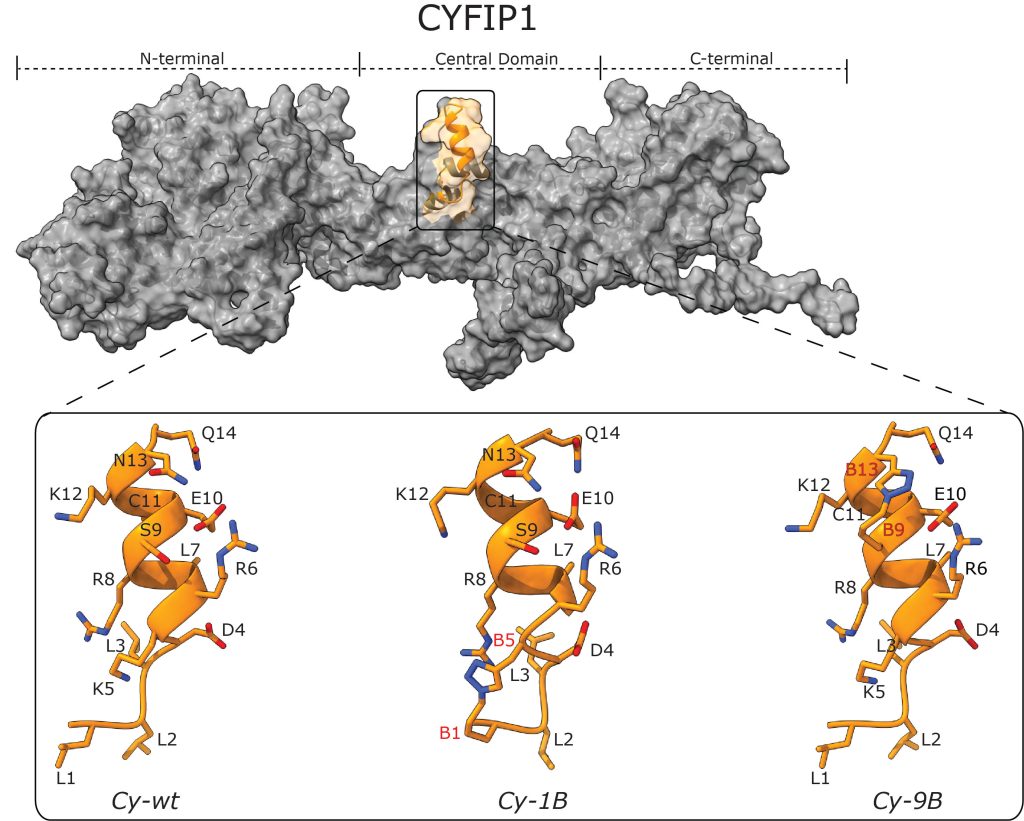Characterization of a Novel CYFIP1 - Derived Peptidomimetic Restoring the Dysregulated mRNAs Translation: Toward An Innovative Therapeutic Strategy for Fragile X Syndrome

Principal Investigator
Co-Principal Investigator
Ancona, Italy
Summary
Fragile X syndrome is due to the loss of a single protein, FMRP, which is responsible for managing hundreds or even thousands of other proteins. In Fragile X syndrome, without FMRP, these other proteins cannot perform as expected, resulting in learning problems, behavioral challenges, and other problems.
The researchers are developing next-generation drugs called peptidomimetics, using the functional features of FMRP. If they succeed, the hope is that we will have new drugs that could make up for the loss of FMRP, thus treating Fragile X syndrome.
The Science
By Daniele Di Marino, PhD
Regulation of Protein Synthesis via the FMRP-CYFIP1-eIF4E Complex
Loss or point mutations of the protein called FMRP causes Fragile X syndrome (FXS). FMRP regulates the synthesis of proteins important for brain development. One of the mechanisms through which FMRP executes this function is by interacting with two other proteins: eIF4E (Eukaryotic translation Initiation Factor 4E) and CYFIP1 (Cytoplasmic FMRP Interacting Protein 1) 8-11. In this molecular complex, the interaction between CYFIP1 and eIF4E blocks the protein synthesis machinery, and FMRP defines the specificity of this complex. In patients with FXS, where FMRP is absent or mutated, the CYFIP1-eIF4E complex no longer works properly, causing an excess of protein synthesis. This in turn lead to altered brain development.
Peptidomimetics: a New Route for FXS Treatment
Currently there is no cure or effective treatment for Fragile X syndrome, and the majority of the available therapeutic approaches are focused on alleviating patient symptoms. Our project aims at intervening of the molecular determinants of FXS through computational design, synthesis, and functional validation of little molecules that can mimic CYFIP1 function (CYFIP1-derived peptidomimetics). These new molecules are designed to specifically and selectively compensate for the loss of the FMRP-CYFIP1-eIF4E complex and restore the proper control of protein synthesis.
Our final goal is to apply computer-aided structure-based drug design approach to develop a group of innovative molecules that can be used, alone or in combination, to pave the way for the development of a new pharmacological strategy to treat FXS.
Additional details can be found in the article The Use of Peptides in the Treatment of Fragile X Syndrome: Challenges and Opportunities.


